Year after year, the name remains legendary, but the 2018 Arctic Cat ZR 8000 Sno Pro 137 version has undergone some very significant changes that make it one of the best Sno Pros ever produced. Many changes are part of the list: engine, hood, clutch…
800cc engine by Arctic Cat
Introduced mid-season last year, this engine features the new C-TEC 2 technology and is manufactured directly at Arctic Cat‘s St. Cloud, Minnesota plant. This engine is unique in that it uses a two-stage injection concept. The first phase consists of injecting fuel directly onto the top of the piston when it reaches its bottom dead center position. The second phase is when the piston resumes its upward stroke, the gasoline is injected through an opening in the piston wall, which lubricates the ball bearing under the piston and provides sufficient gasoline when needed. With these modifications, fuel consumption is reduced by 10% at full throttle compared to the 800 cc Suzuki of previous years.
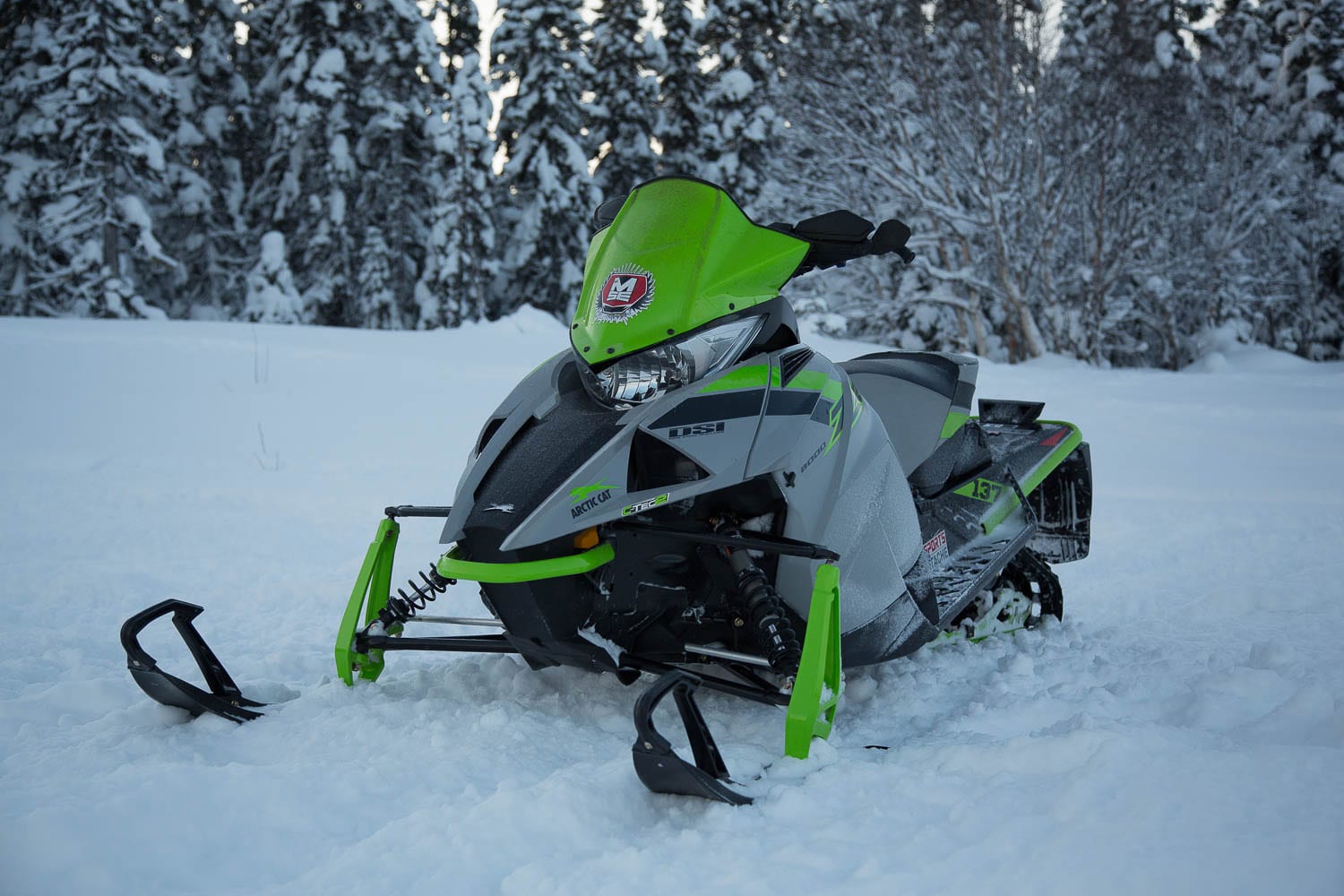
Reduction of oil consumption, it is now injected by an electronic pump directly into the fuel line just before its entry via the injectors, this allows a better calibration according to the altitude and the revolution of the engine. 30% reduction in oil consumption below 7,000 rpm.
New Team clutch pulley
Introduced last year on the 9000 models, they are now found on the 8000 models. No belt adjustment is required, the belt always remains perfectly tensioned and at the right height in the secondary pulley. This is made possible by the addition of a ball bearing in the center of the primary pulley (clutch), which ensures that even if the belt is very tight, there is no friction between the pulley and the belt. The result is a belt that is always well positioned in the driven pulley, less slippage, less wear and tear and therefore a longer life.
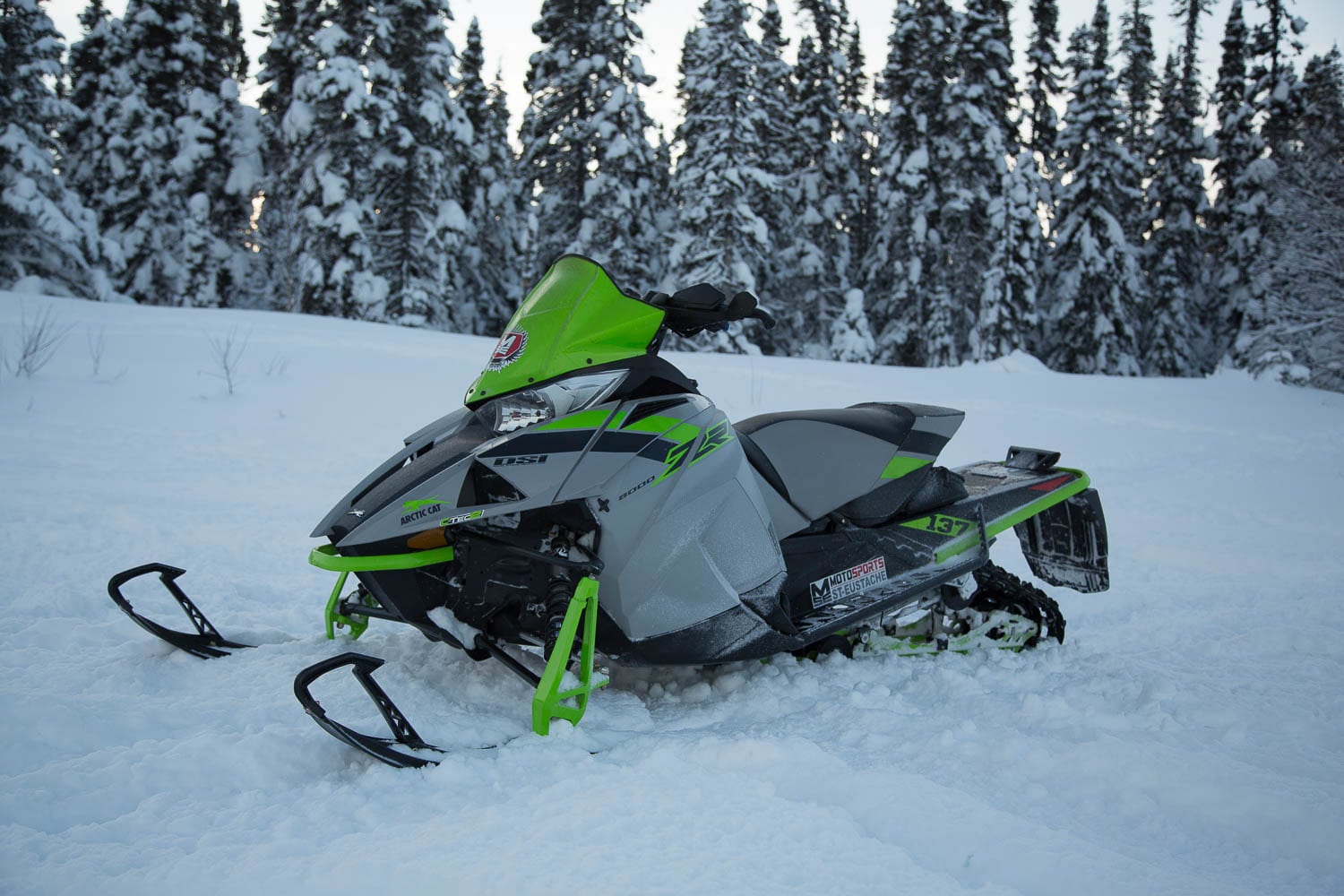
New generation body panels
Just like the Team pulleys, the new concept of side panels and cowling introduced last year on the 9000 models makes its appearance on the two-stroke range. Their primary function is to improve air circulation inside the engine compartment, their design limits atmospheric tension and, above all, facilitates maintenance by being very simple and quick to remove.
Suspension
Up front is the Arctic Race, which has been around for a few years. Its unique design with a large spacing between the A-arms allows to keep an excellent parallelism, whatever the position of the suspension. The Sno Pro version features Fox Zero 1.5 RC shocks with coil springs. The spring preload is adjustable via a ring that you screw or unscrew according to the desired adjustment, and on the shock side, you can adjust the compression and rebound speed.
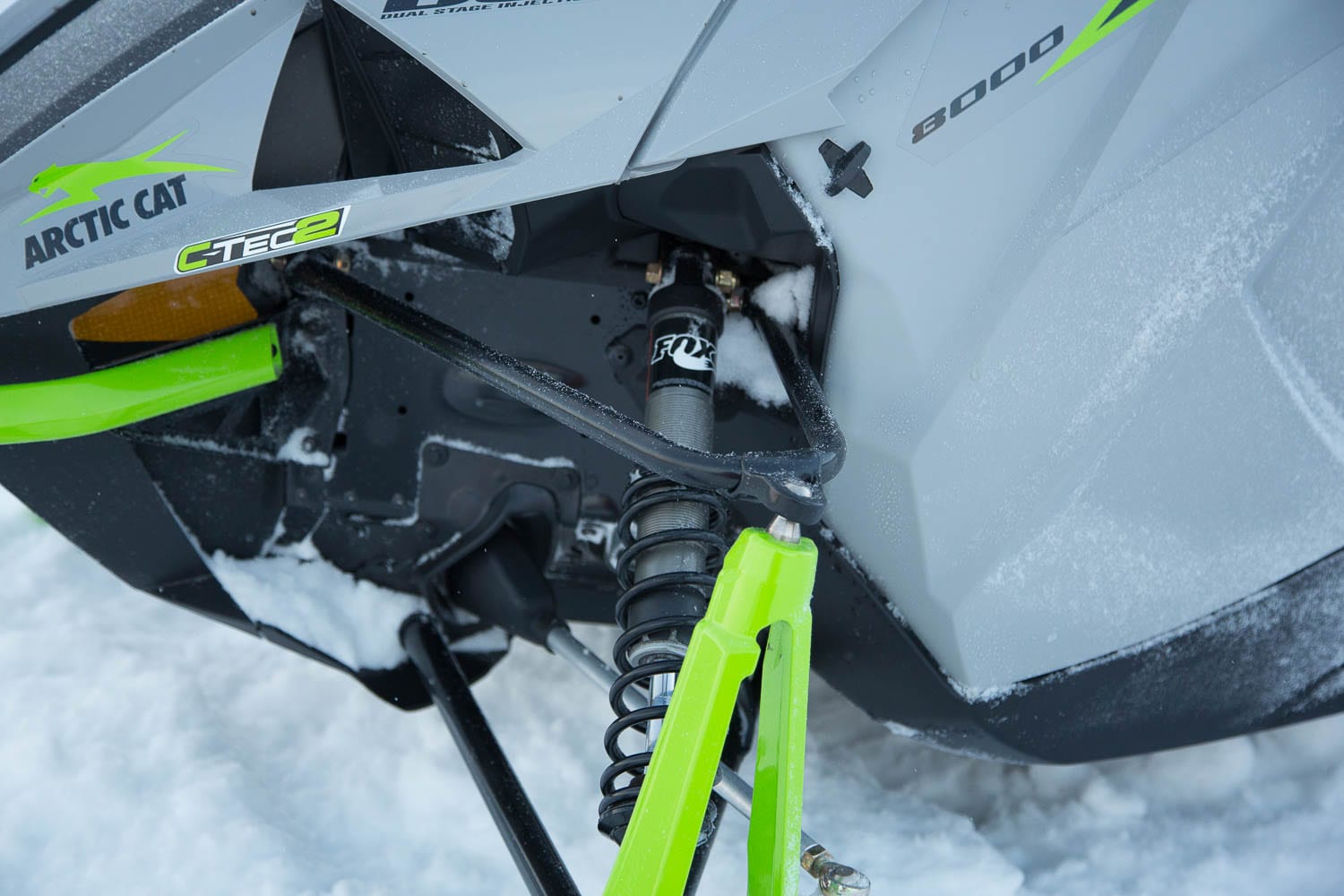
At the rear, we find the famous Slide Action in a 137-inch version that has also been rolling for a few years. The front swingarm is mobile on its shaft that connects it to the frame, which allows it to better follow the terrain. The rear end is fully coupled and adjustable via the transfer blocks. Two preload adjustments are available, one at the center shock coil spring via a threaded ring, and the second adjustment is at the two rear coil springs, with an adjustment block. The center shock is a 1.5-inch diameter Arctic Cat floating piston shock, while the rear shock is a larger 2-inch diameter.
On the trail
Although the steering is nothing new, it is still a strong point of Arctic Cat. Handlebar response is as precise and quick as ever, and despite relatively soft conditions with little bite, the ZR impresses with its ease of turning. As in the past, even with a lot of ski pressure on the ground, steering effort is minimal. Even at very low speeds, it’s easy to turn the handlebars. In turns as well as in acceleration, the rear suspension coupling does an excellent job of keeping the skis on the ground.
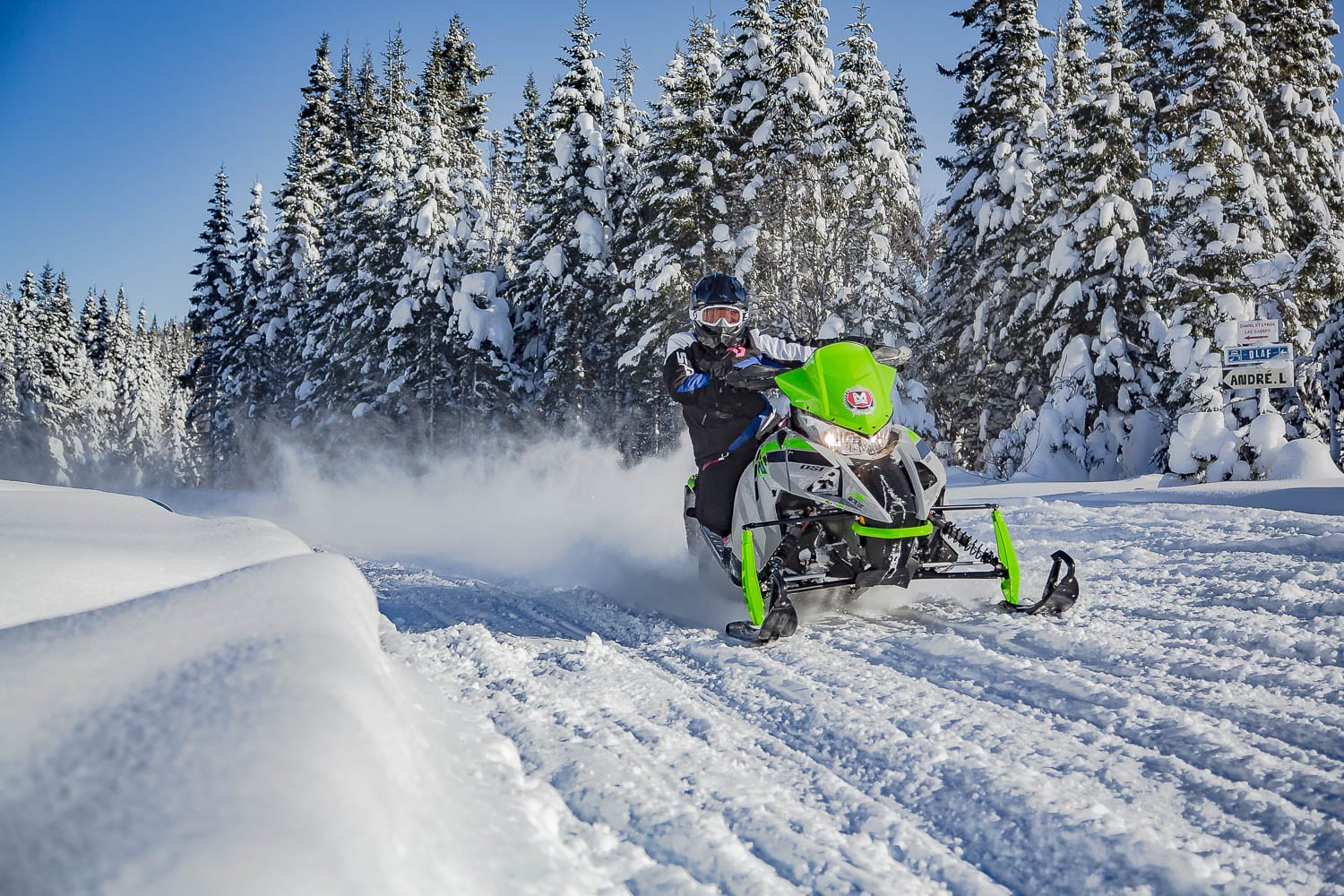
The rear suspension calibration is effective and relatively smooth over small bumps, and works well in rougher terrain. However, if you like to push yourself to the limit in rougher conditions, you’ll be better served with an El tiger, Limited or RR version, which are equipped with shocks better calibrated for this kind of riding.
Remarkably, there is a marked improvement in throttle response at low rpm. The introduction of the new American-made engine is clearly more efficient at low and mid-range than the old Suzuki 800. Hesitations at low revs are practically gone, and what can I say about cold starting, which is much easier, and the noticeable reduction in smoke, especially when cold… Let’s face it, this was not a luxury!
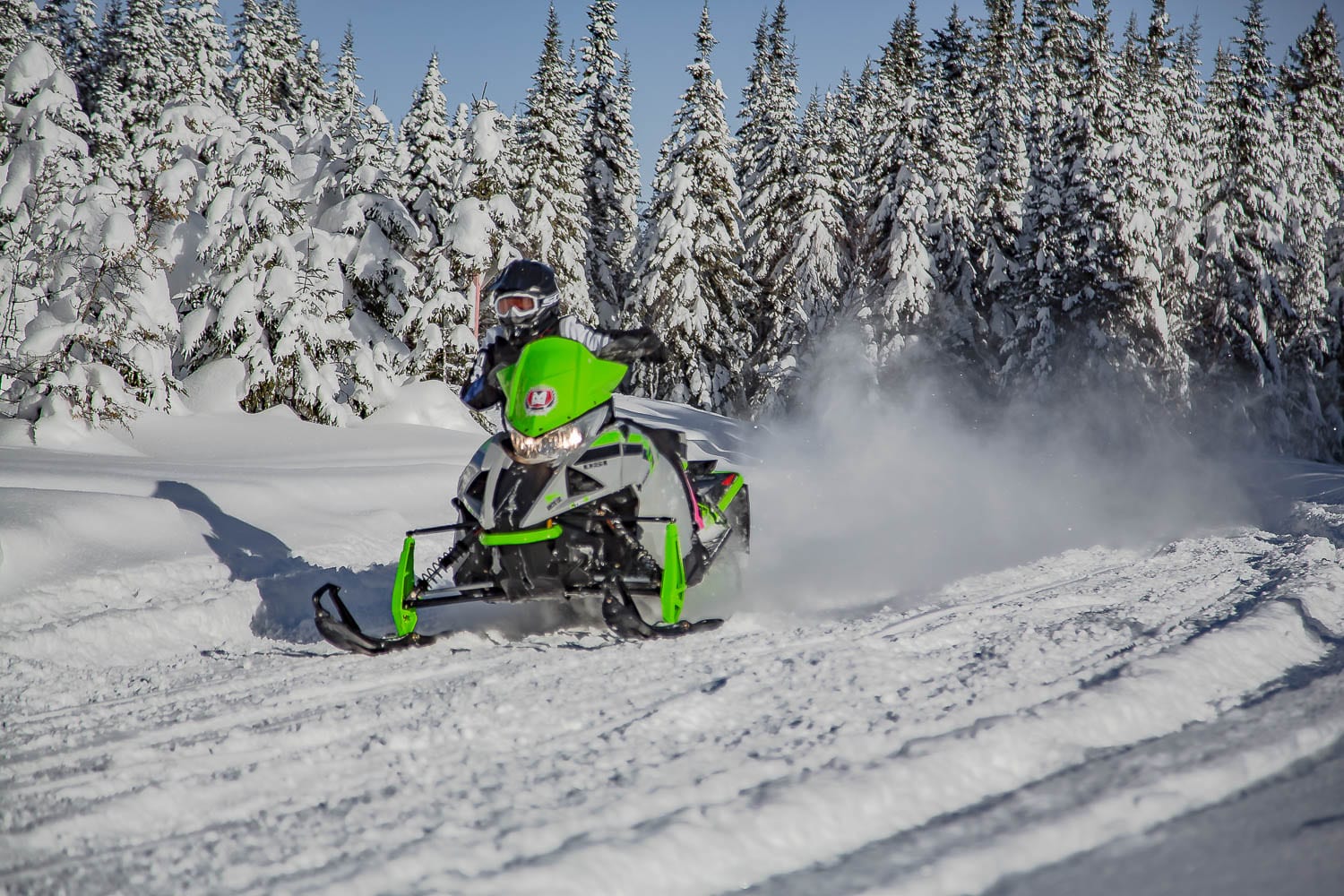
If we take a look at the riding position, we find a good knee position, the footrests offer enough space for the feet. The handlebars can be adjusted in a few minutes with the help of a key. As for the accessories, the only complaint is that the button to activate the electronic reverse gear is difficult to operate with gloves on. For the other controls, it is easy to use with a good size. A wider range of use for the heated handles and thumbs would be an asset.
The 2018 ZR 8000 SnoPro catches up with the trail enthusiast who likes doses of adrenaline and light riding, though we weren’t able to test the fuel economy, it’s a safe bet that there will be a good improvement on previous years’ models.
In closing, we must thank Arctic Cat Motosports St-Eustache for making this test possible!





